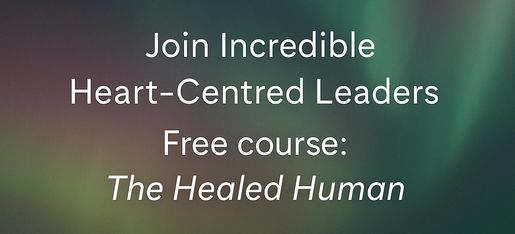Signed in as:
filler@godaddy.com
Signed in as:
filler@godaddy.com

As a wellness anthropologist, my research explored how different cultures approach healing and the worldviews that shape their practices. I sought to uncover the common threads that unite us all, and in doing so, I discovered fundamental similarities among diverse groups worldwide.
These shared principles not only provided insight into healing my own C-PTSD but also revealed a simple yet profound framework for restoring communal wellness. At its core, social wellness is a commitment to open, playful, and curious connection, rooted in love, trust, safety, and protection.
Through trauma and disconnection, we have lost this essential bond. However, by dedicating ourselves to intentional action, we can move toward collective healing and rediscover the vitality of true connection and healthy communities once again.
If you go to my music page, you will see the personal journey that I have with healing and that my knowledge is as much experiential as it is based in academic research. Creating my music allowed for me to heal, and also to share and inspire with others in their journey.
“The most broadly accepted definition of 'health,' as established by the World Health Organization: 'A state of complete physical, mental and social wellbeing, and not merely the absence of disease or infirmity. ' Health is a noun. “Healing is a verb. It refers to the process of restoring health..." (CaringBridge)
Different cultures have diverse perspectives on healing, influenced by their unique beliefs, traditions, and historical contexts. Healing practices vary widely, encompassing not only physical well-being but also emotional, mental, and spiritual dimensions. Here are some cultural perspectives on healing:
1. Traditional Chinese Medicine (TCM):
2. Ayurveda (Indian Healing System):
3. Indigenous Turtle Island Healing:
4. African Traditional Healing:
5. Islamic Healing Traditions:
6. Indigenous Australian Healing:
7. Japanese Healing Practices:
8. Western Biomedical Model:
9. Judaic Healing Traditions:
10. Latin American Curanderismo:
1. Prayer and Faith:
2. Sacraments and Rituals:
3. Community Support:
1. Connection to Spirit World:
2. Energy Healing:
3. Ceremonial Practices:
4. Herbal Medicine:
4. Soul Retrieval:
These cultural perspectives highlight the rich tapestry of healing practices worldwide. While approaches may differ, the common thread is the recognition of the interconnectedness of physical, emotional, and spiritual well-being in the healing process.
Healing in the body and mind is a complex and interconnected process that involves various physical, psychological, and emotional factors. Here are some key aspects of how healing occurs:
1. Cellular Repair and Regeneration:
2. Inflammatory Response:
3. Immune System Function:
4. Nutrition and Hydration:
5. Rest and Sleep:
1. Cognitive and Emotional Processing:
2. Neuroplasticity:
3. Psychotherapy and Counseling:
4. Mindfulness and Meditation:
5. Social Support and Connection:
6. Self-Compassion:
1. Mind-Body Connection:
2. Belief and Placebo Effects:
3. Spiritual and Existential Healing:
4. Resilience and Adaptability:
Healing is a personalized and multifaceted journey. It involves addressing physical ailments, understanding and processing emotions, fostering positive connections, and adopting a holistic approach that considers the interplay between the mind, body, and spirit. The integration of medical, psychological, and complementary approaches can support comprehensive healing.
There are extensive lists for healing modalities, here are just some that are out there:
Traditional Medicine Systems:
Energy-Based Healing:
Mind-Body Practices:
Bodywork Therapies:
Herbalism:
Sound Healing:
Counseling and Psychotherapy:
Holistic Nutrition:
Alternative Medicine:
Movement Therapies:
Animal-Assisted Therapy:
Environmental Healing:
Mind-Body Medicine:
Expressive Arts Therapies:
Traditional Healing Practices:
Integrative Medicine:
1. Combining conventional and alternative approaches for a holistic approach to health.
Color Therapy (Chromotherapy):
1. Using colors to promote physical and mental well-being.
Aromatherapy:
1. Using essential oils for therapeutic purposes.
Crystal Healing:
1. Using crystals and gemstones for healing.
Biofield Therapies:
1. Healing practices that work with the body's energy field.
Modern Healing Modalities:
Ceremonies and Rituals:
These diverse modalities and practices offer a wide spectrum of approaches to healing and well-being. It's essential to approach them with respect, cultural sensitivity, and a consideration for individual preferences and needs. See more about recommendations for that below.

I have explored the majority of the list of healing modalities in my own journey. Both to heal and also to research what and why each different modality was working, and what process it takes.
It's amazing to see the rich tapestry of healing modalities and practices that exist worldwide. Each one carries its own unique wisdom and cultural significance. However, it's crucial to approach these practices with respect and awareness.
Recommendation:
While many healing modalities are open to exploration and adaptation, it's important to be mindful of cultural appropriation. Cultural appropriation occurs when elements of one culture are borrowed or taken by members of another culture, often without understanding or respecting the cultural context.
Definition of Cultural Appropriation:
Cultural appropriation involves adopting aspects of another culture, such as rituals, ceremonies, or traditional practices, without a deep understanding of their cultural significance. It can lead to the erasure of cultural identity, misrepresentation, and perpetuation of stereotypes.
Considerations:
In essence, while exploring diverse healing practices, it's essential to do so with cultural awareness, respect, and a commitment to understanding the context from which these practices emerge. This approach fosters a more inclusive and appreciative engagement with the wealth of healing modalities available globally.
What are trauma-informed spaces?
Trauma-informed spaces, whether for groups or individuals, are environments designed with a deep understanding of the impact of trauma on mental and emotional well-being. These spaces prioritize safety, trust, and empowerment, recognizing the prevalence of trauma and aiming to avoid re-traumatization. Here are key characteristics of trauma-informed spaces:
1. Safety and Trustworthiness:
2. Peer Support and Collaboration:
3. Empowerment and Choice:
4. Understanding Trauma:
5. Cultural Sensitivity and Responsiveness:
6. Collaboration with Professionals:
7. Clear Communication:
8. Avoidance of Triggers:
9. Flexibility and Individualization:
10. Trauma-Informed Language:
11. Mindfulness and Self-Care:
12. Continuous Learning and Improvement:
13, Crisis Intervention Protocols:
Trauma-informed spaces are designed to create an atmosphere where individuals feel respected, supported, and understood, promoting healing and resilience. Whether in group therapy, educational settings, or community organizations, the principles of trauma-informed care aim to foster environments that prioritize the well-being of all participants.
Trauma Informed Protocol (pdf)
DownloadThere are numerous experts in the field of trauma and healing, each contributing significantly to our understanding of trauma and the various modalities for healing. Keep in mind that expertise is diverse and may span psychology, psychiatry, neuroscience, counseling, and various alternative healing practices. Here are some notable figures:
These experts come from diverse backgrounds, and their work often intersects with various modalities and disciplines. It's important to explore multiple perspectives and approaches when delving into the field of trauma and healing. I want to honour those who are not out there in the medical industry and are experts in trauma from sacred and ancient ways of knowing and being.
Please check back for a growing list of healing practitioners that are vetted and Simply Sacred Solutions approved. For suggestions or if you want to be listed, please reach out.

Copyright © 2023 Simply Sacred Solutions - All Rights Reserved.

Calling all social change leaders and professionals to join my free Skool community and enter into heart-centred leadership today!